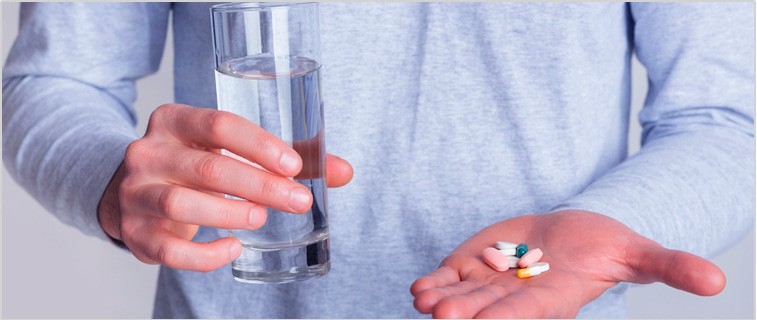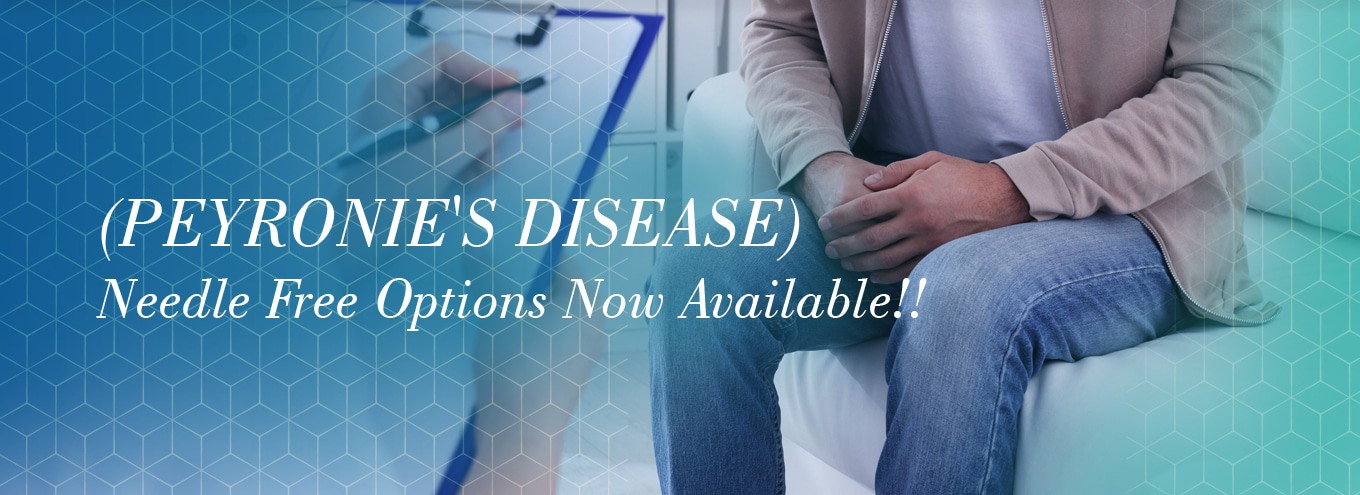
The natural penis does have some level of curvature. However, after sustaining an injury to the penis, some men develop more severe, unnatural levels of curvature. In some cases, the issue can be so severe that it causes painful erections and issues with sex. This condition is known medically as Peyronie's disease.
While injectable medications can be used for the treatment of Peyronie's disease, other injection-free options may be viable. Below is a closer look at Peyronie's disease, the symptoms, and the many different ways the condition can be treated.
Peyronie's disease is characterized by the formation of flat sections of scar tissue (plaques) in the penis. These plaques change the shape and curvature of the penis, sometimes to a degree that makes it difficult to get an erection or enjoy sex.
The penis is made up of three main tubes: the urethra and two corpora cavernosa. The urethra carries urine and sperm, but the two corpora cavernosa fill with blood during an erection. The three tubes are protected by a fibrous sheath. With Peyronie's disease, plaques form on the fibrous sheath on the bottom, top, or side of the penis, which leads to abnormal shape or curvature.
Symptoms of Peyronie's Disease
The primary symptoms of Peyronie's disease include:
-
Abnormal penile curvature
-
Painful lumps under the skin of the penis
-
Pain when the penis is erect
-
Difficulties with satisfactory sex due to the curve of the penis
In some cases, the level of curvature or the pain with erection can be so severe that it leads to erectile dysfunction (ED).
The Stages of Peyronie's Disease
Men with Peyronie's disease can have different symptoms depending on the phase of the disease. The condition is usually designated as in either the acute or chronic phase. During the acute phase, plaques are forming in the penis, pain is common, and the curvature may seem to be getting worse. This phase may last for up to 18 months but usually subsides after around 5 to seven months. During the chronic phase, the pain may subside, and the curvature will remain pretty much the same.
Peyronie's disease is caused by penile injury, and the injury does not have to be significant to lead to excessive penile curvature. Penile injury can come about due to vigorous sexual activity. For example, bending the erect penis by accident during penetration could lead to a penile injury. However, a penile injury may also occur as a result of an accident, such as while playing sports. When the injury starts to heal, the formation of scar tissue can lead to the formation of Peyronie's plaques. .
It is important to note that not all men who sustain injuries to the penis will end up with Peyronie's disease. This has led researchers to believe that other factors may be at play in the development of the condition, such as genetic or even environmental components. Some urologists believe that Peyronie's disease is caused by an issue or fault in the healing process.
Peyronie's Disease vs Congenital Penile Curvature
In rare cases, males are born with congenital penile curvature, which is not the same as Peyronie's disease. The issue affects less than one percent of males and is often only apparent when the penis is erect. Therefore, the problem may not be discovered until later in the boy's life. Even though both conditions can cause abnormal penile curvature, congenital issues do not have anything to do with the formation of scar tissue.
It is possible for Peyronie's disease to go away on its own without any type of treatment, although non-treated correcting is relatively rare. Only about 13 out of 100 diagnoses lead to the problem going away without surgery or medical treatment. Usually, men that don't need treatment will have very minimal curvature, no major pain, and no issues with sex. In the event that Peyronie's disease does need to be treated, there are several routes that may be taken, some more common and effective than others.
Surgical Treatment of Peyronie's Disease
Surgery is only recommended for Peyronie's disease when the condition is so severe that it affects the man's ability to have sex. Surgery is only performed during the chronic phase when the condition does not seem to be getting worse. A few techniques may be used depending on the situation. For example, a surgeon may use sutures to fold tissue on the curved side of the penis to straighten it or insert a prosthetic device to elongate the opposite side.
Nonsurgical Management of Peyronie's Disease
When Peyronie's disease is not so severe, nonsurgical management may be effective enough to help. There are a few different routes a doctor may recommend for managing the condition, and they may recommend a combination of treatments.
Oral Drugs for Peyronie's Disease
A doctor may recommend a few oral medications for Peyronie's disease, even though most have not been extensively studied for their safety or efficacy for the condition. For example, tamoxifen, a non-steroidal drug often used to treat desmoid tumors, may be used to target the plaques.
Another medication, potassium amino-benzoate, has been shown to potentially reduce the size of plaques in small-scale studies. However, the high dosage level makes it undesirable for most men because they have to take as many as 24 pills per day during treatment.
Pentoxifylline—a vasodilator—is one of the more accepted oral medications for Peyronie's disease. In a double-blind, placebo-controlled study, Pentoxifylline proved to be effective for Peyronie's disease. At least 37 percent of the men treated experienced an improvement in curvature.
Injection-Free Treatment of Peyronie's Disease
Recently, there has been a lot of interest in using topical treatments for Peyronie's disease. The treatment that has received the most attention is a topical, compounded medicine of either 15 percent Verapamil or 10 percent Verapamil HCl and 5 percent Pentoxifylline.
Transdermal Verapamil 15% gel may slow the formation of plaques because it is a calcium channel blocker. The fibroblasts that create Peyronie's plaques require calcium to form. Therefore, Verapamil given in the early stages after an injury may help thwart plaque development to some degree. Topically applied Verapamil may also be effective. In a study of 57 patients, over 94 percent had improvement in curvature after nine months of treatment with Verapamil HCI 15% topical gel.
While Pentoxifylline is often given orally for Peyronie's disease, this medication can also be used topically. The combination of Verapamil and Pentoxifylline in a topical gel offers an injection-free treatment option that may be even more effective than the transdermal Verapamil alone.
Injections and Combination Treatments for Peyronie's Disease
Verapamil and Xiaflex are two injections that may be used to treat Peyronie's disease. When Verapamil is injected into plaques, research has shown it to be effective. Out of 140 men who completed treatment, 60 percent had a measurable curvature decrease and 71 percent experienced an improvement in sexual function.
Xiaflex is a collagenase that dissolves collagen and can be injected into the plaques under the skin to target Peyronie's disease as well. This medication is FDA-approved for the treatment of Peyronie's disease and does show some efficacy.
A combination of oral Pentoxifylline and injected Verapamil is a known treatment approach. In studies using both medications, Pentoxifylline daily and injections of Verapamil every other week for 12 weeks, treatment outcomes were more profound than with only one of the medications.
Even though Peyronie's disease is a worrisome problem, you do have options for treatment. Some treatments are not at all invasive and may still offer substantial improvements. If you would like to know more about topical treatments for Peyronie's disease, reach out to us at Harbor Compounding Pharmacy to find out how we can help.
References
- https://my.clevelandclinic.org/health/diseases/17345-penile-curvature
- https://www.urologyhealth.org/urology-a-z/p/peyronies-disease
- http://www.topicalverapamil.com/topical-verapamil-study-P02.html
- https://pubmed.ncbi.nlm.nih.gov/17367443/
- https://www.nature.com/articles/nrurol.2010.53
- https://www.ccsenet.org/journal/index.php/gjhs/article/view/38292
- https://d1skd172ik98el.cloudfront.net/48a33315-f594-4269-8043-8853d10fb7bf/8d46e543-c6ea-441f-8185-5f20094efdc1/8d46e543-c6ea-441f-8185-5f20094efdc1_source__v.pdf



